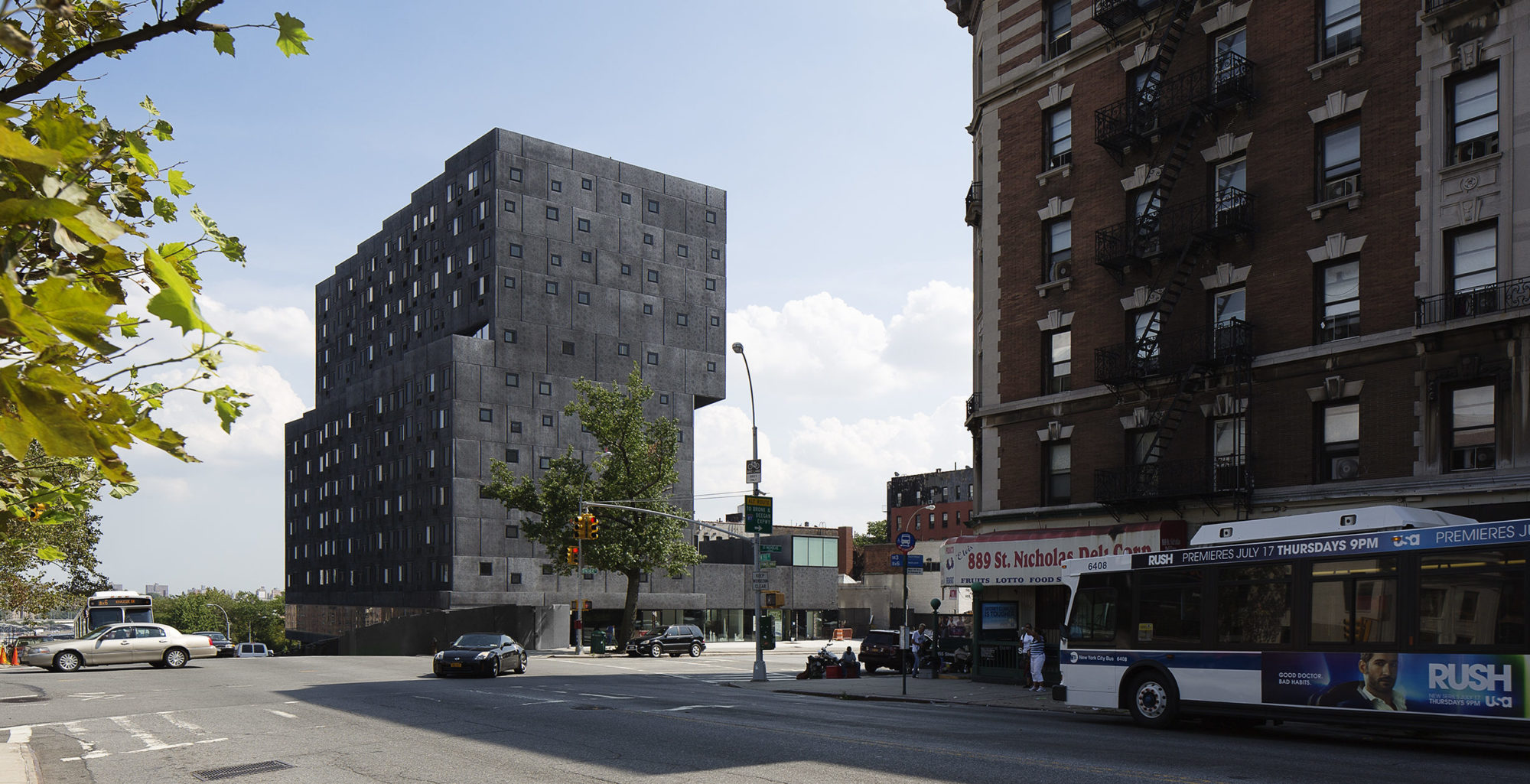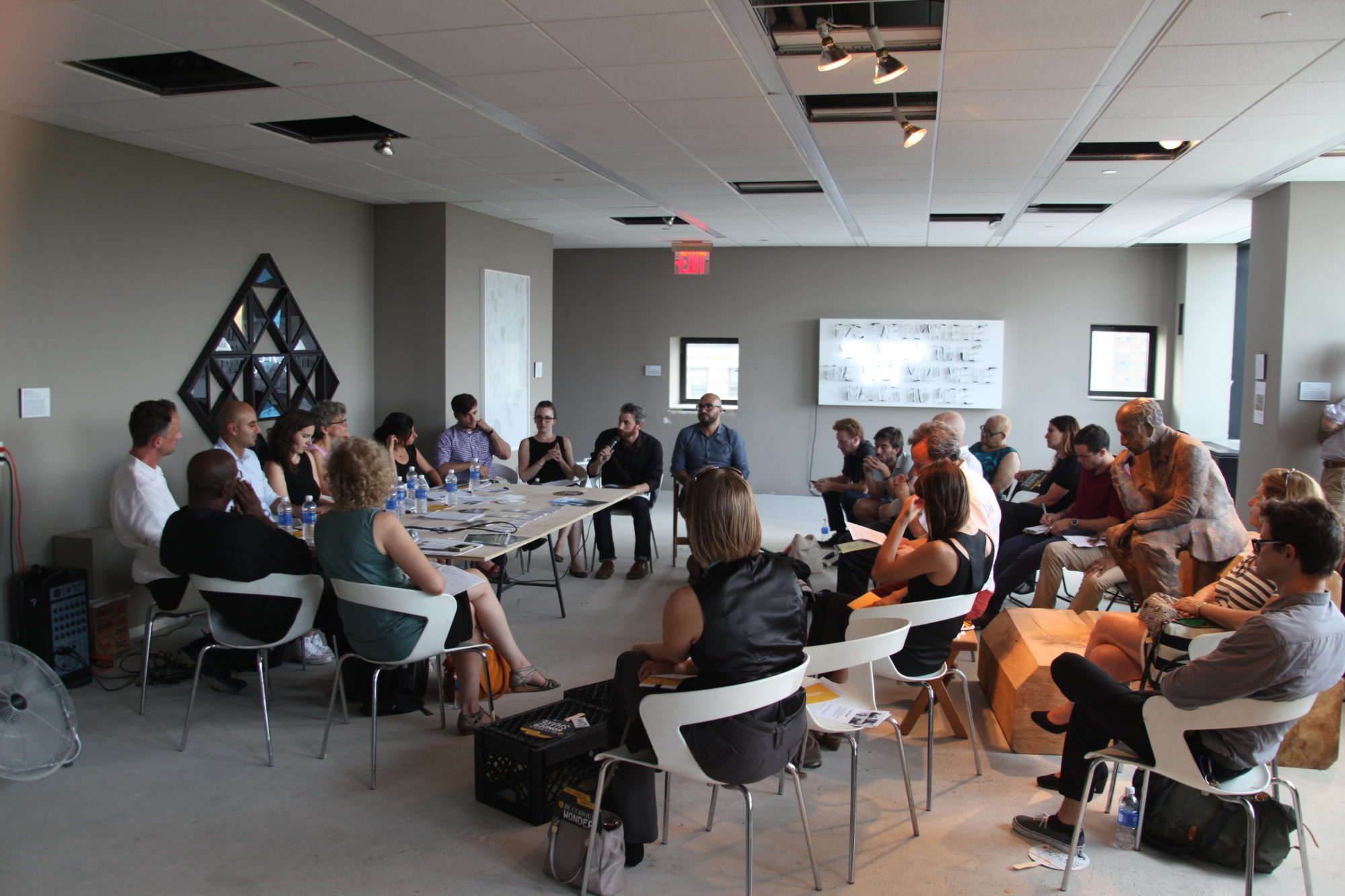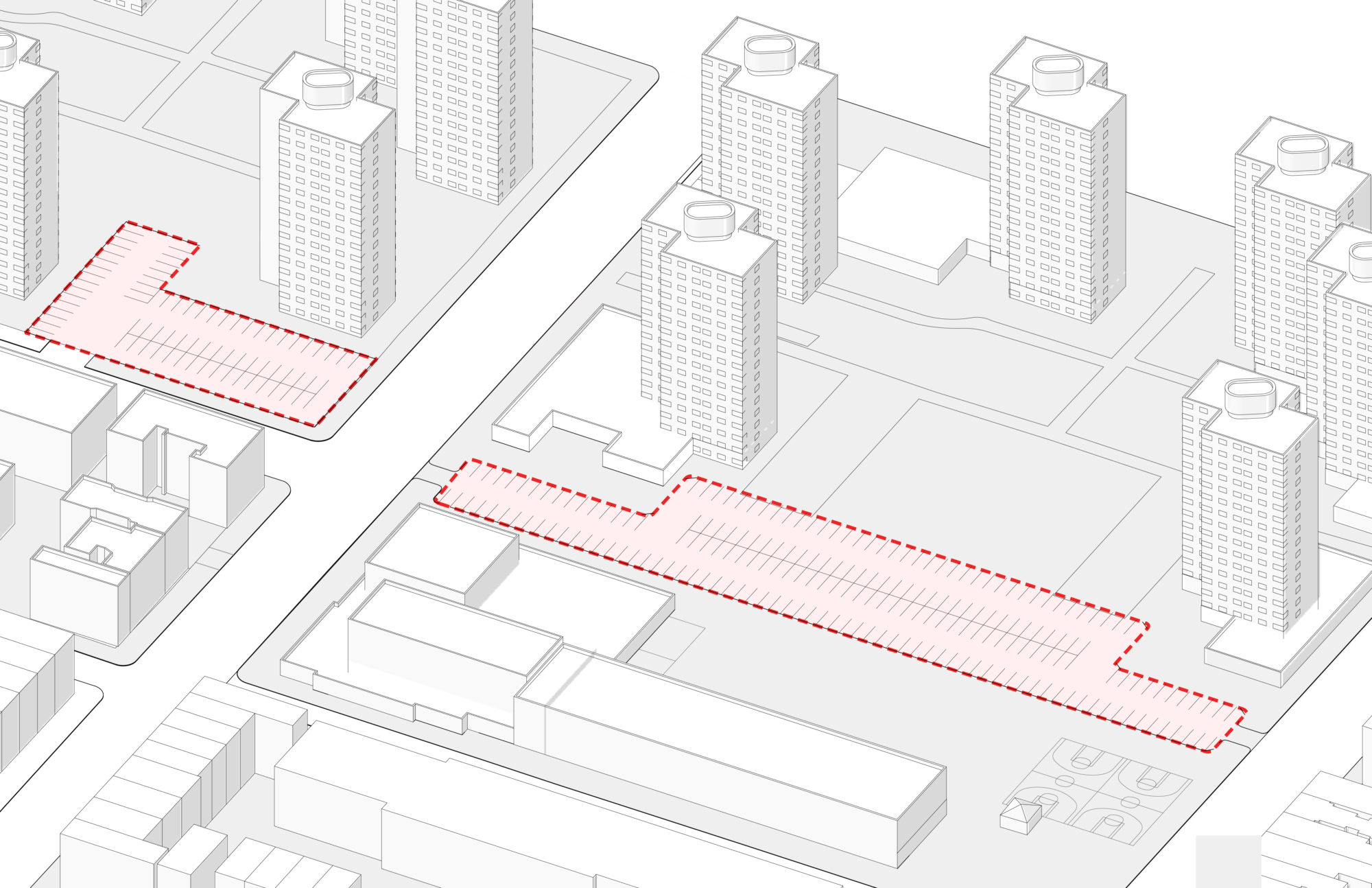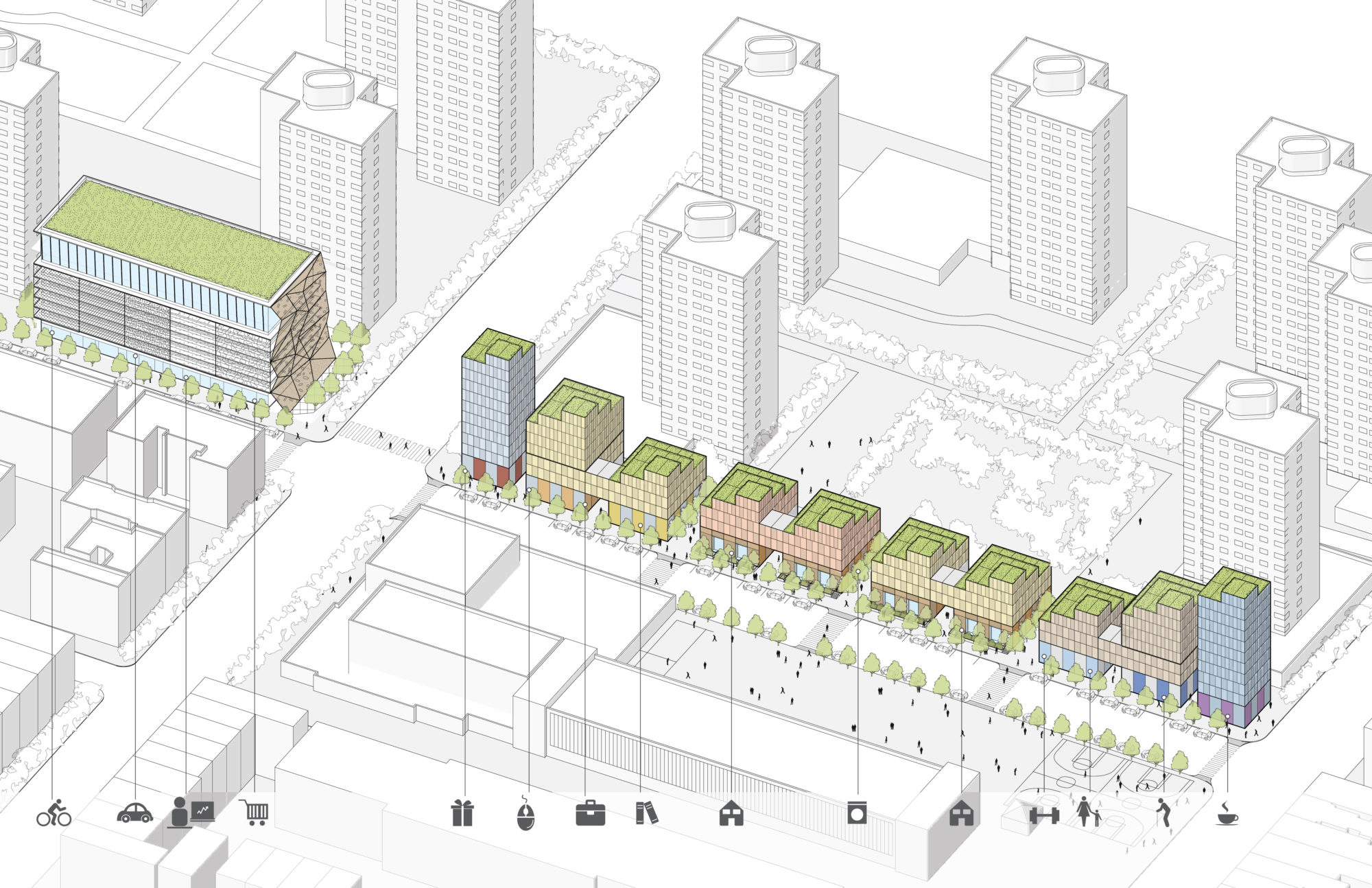Total Reset

David Adjaye Associates, Sugar Hill Development, New York, completed 2014 [photo: Ed Reeve, courtesy of David Adjaye Associates]
Share:
One month after taking office, New York mayor Bill de Blasio declared a “total reset” for housing. Appointing four progressive leaders to the city’s housing agencies, de Blasio extended his campaign pledge to fight income inequality in New York. His “reset” promised to sharply increase the production of below-market housing, renovate aging public housing buildings, and repair the relationship between residents of public housing and the city government. The mayor’s focus on these issues aligns with New Yorkers’ interests: city residents have rated the decline of affordable housing their greatest concern.
As a response to the mayor’s initiatives and the underlying crisis, the Institute for Public Architecture (IPA) launched a program series, Total Reset. Supporting efforts to improve public and below-market housing, the series brings together experts and explores ambitious, achievable ideas. As with all IPA programs, the essential question of Total Reset is: how can architecture better serve the public?
Total Reset began with a multidisciplinary roundtable, convened by the IPA and hosted by Columbia University. The conversation, facilitated by former city commissioner David Burney, foregrounded the role of architecture in housing, with the ultimate goal of improving the lives of New Yorkers. New York City Housing Authority (NYCHA) general manager Cecil House and Reginald Bowman, then president of the NYCHA resident association, joined architects, developers, researchers, advocates, finance experts, and historians to discuss the most pressing issues of the “total reset.”
The roundtable laid the groundwork for a residency and exhibition on the same topic. The IPA selected a class of inaugural IPA Fellows who responded to the roundtable outcomes with four research and design proposals for public and below-market housing in New York.
Total Reset workshop two [photo: Sben Korsh]
In contrast with a traditional residency, a retreat away from the city, the Total Reset residency and installation were set in a new, below-market housing development in Sugar Hill, Harlem, developed by Broadway Housing Communities and designed by architect David Adjaye. Fellows were nominated by top New York architects and housing experts, and were selected by a jury comprising Jonathan Kirschenfeld, Susanne Schindler, Juliette Spertus, and myself. The project aims to catalyze discussions and to provide a platform to emerging public interest designers.
Inaugural IPA Fellows are Kaja Kźhl, in association with Columbia University Graduate School for Architecture, Preservation and Planning’s 5 Borough Studio; Nadine Maleh; Quilian Riano; and the team of Sagi Golan, Miriam Peterson, and Nathan Rich. Together, their proposals connect design, policy, and community engagement. The exhibition took place in a yet-to-be occupied studio apartment.
Kaja Kźhl and the 5 Borough Studio produced New York is My Home, an exhibition of “postcards from home,” sent by New Yorkers, that documents what we value about our houses, our blocks, our neighborhoods, and the city we live in. Five hundred postcards filled the exhibition space over the course of the summer. Nadine Maleh, who’s worked in supportive housing for more than a decade with Community Solutions and Common Ground, created Journal of a Houser: Holistic Neighborhoods. A “houser” explores the everyday stories behind the below-market housing she creates. Maleh brings together design, operations, finance, and neighborhood engagement to develop housing centered on human well-being.
Quilian Riano’s ShareWhat?! is a collaborative research and design project on the spaces and services we share, or could share, with others. Riano asks, what happens when individuals leave their apartments and come together? His research examines the historical context of sharing in New York, current practices, and cooperative and tenant union structures. Named for the size of a standard parking space, 9 x 18, by Sagi Golan, Miriam Peterson, and Nathan Rich, explores how updated parking and housing development regulations could create new potentials for affordable housing.
Named for the size of a standard parking space, 9 x 18, by IPA Fellows Sagi Golan, Miriam Peterson, and Nathan Rich, explores how updated parking and housing development regulations could create new potentials for affordable housing. This proposal shows housing that could be built on existing surface parking lots.
The Total Reset exhibition was part of No Longer Empty’s If You Build It, a site-specific series of public installations and events in the Sugar Hill Project, produced in collaboration with Broadway Housing Communities, community partners, and artists. The Sugar Hill Project combines 124 permanently below-market apartments, including 25 set aside for households currently in the NYC homeless shelter system, with an early childhood center and a new cultural institution, the Sugar Hill Children’s Museum of Art and Storytelling.
As a community of architects, developers, activists, and researchers, the IPA is committed to quality architecture in the public interest. The shift in attention to below-market housing offers the opportunity to join together in making our city a vibrant and livable place for all New Yorkers. The IPA promotes socially engaged architecture through urban research projects and a residency program for design practitioners. By supporting architects and allied professionals working in the public interest, the IPA strives to improve our public realm.
The closing of the Total Reset exhibition marked the beginning of a long-term discussion. Fellows’ work has been featured in The New York Times and received a direct response from City Hall. Fellows presented at the Municipal Art Society and the Center for Architecture, and I shared the work with AIA National and Enterprise Community Partners. The IPA is formalizing partnerships with institutions and the city to propel the work forward.
June 26–August 10, 2014
The Sugar Hill Project
155th Street, Third Floor
totalreset.tumblr.com


